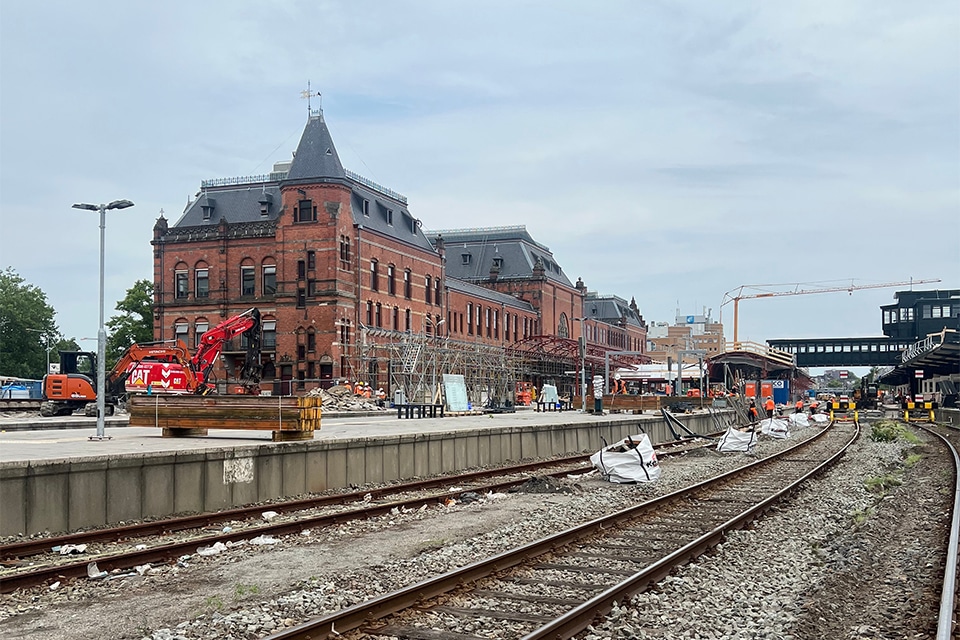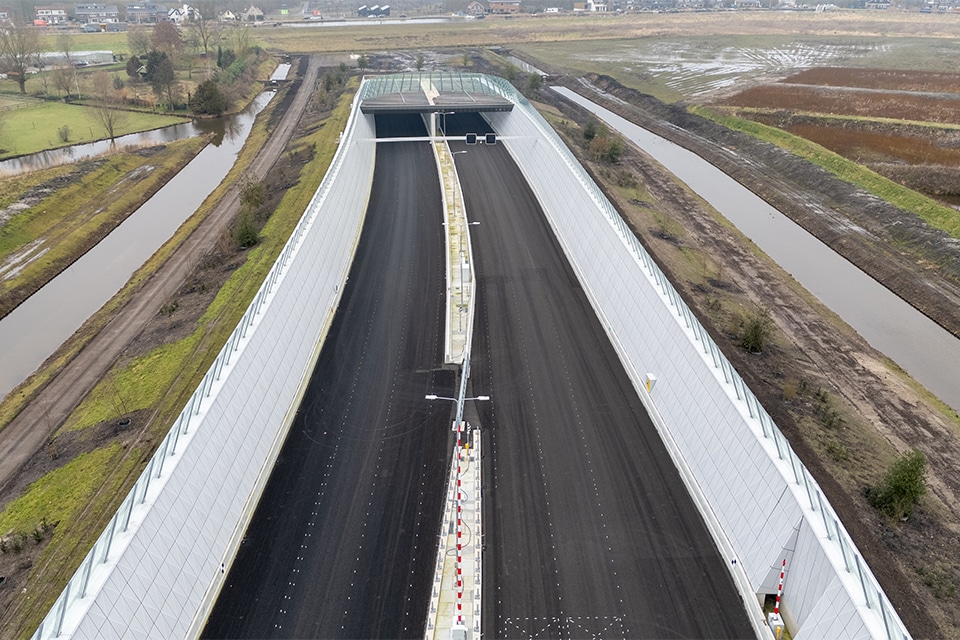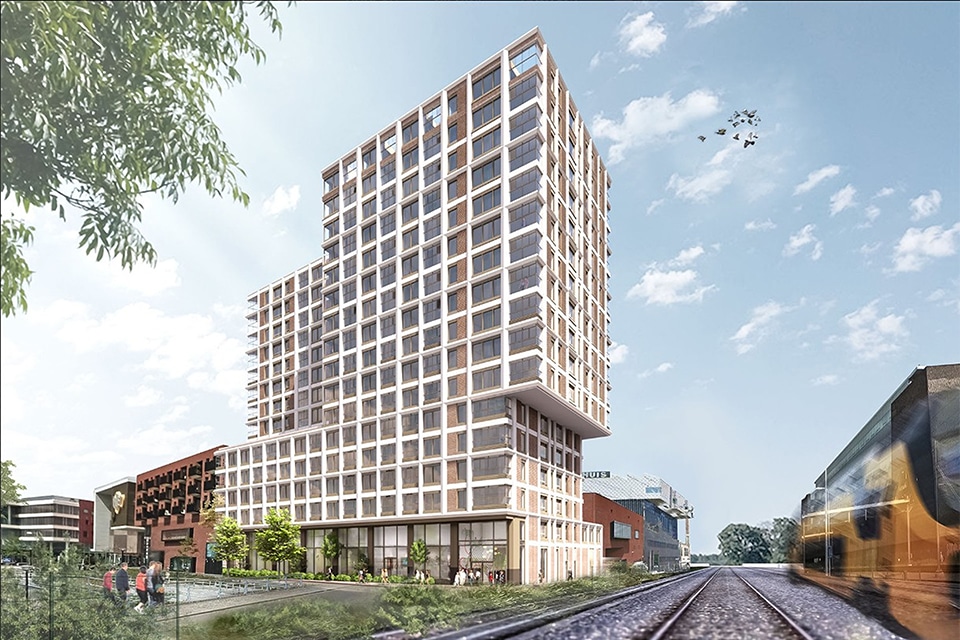
"Are there sustainable alternatives?
Customers of J.P. van Eesteren have been asking this question more and more over the past two years, notes project realization director Michel Hoogendoorn. And if they don't ask the question, the construction company itself will come up with more environmentally friendly options. 'It won't be long before legislation for sustainable construction is introduced, so we'd better be ahead of the game.'
Sustainability topics have become an increasing priority in recent years, including in construction. What do you think about that?
"With that attention, I think you can only be happy. Nobody wants more pollution, waste and overconsumption. We increasingly get the question from customers and investors: are there sustainable alternatives instead of the standard materials? With customers who don't ask, we say: dear customer, you asked for this, we also have a sustainable alternative for that, are you open to that? Sustainability also has an increasing emphasis in discussions with the partners we select for a project. For example, we ask how sustainably their products have been produced and what the company is doing about waste reduction."
Your website says of sustainable building, "If we're going to do it anyway, we like to lead the way.
"Yes, we have the ambition to accelerate this. We support the Climate Agreement and are making efforts to reduce our CO2 footprint. In addition, sustainability will soon also become an obligation, so we had better be prepared for that. Legislation is being drafted in Europe to tax imports of products with a CO2 surcharge. Nor will it be long before there is legislation in the Netherlands on the nitrogen and CO2 footprint of your construction site and the sustainability of materials used. The question is not whether this legislation will come, but how soon. That is my personal conviction, but also that of TBI, the group of companies we fall under. I expect within a year or two or three."
Specifically, what are you doing to build more sustainably?
"We are making an inventory of common products and materials. What is their CO2 footprint and are there more sustainable, healthier alternatives? Think of paint, glue, carpet, you name it. Customers are often unaware of the possibilities. We also started last year to put solar panels on the construction chains at all construction sites. We have a number of electric trucks and buses, and all construction cranes are also already electric. We are also trying to reduce waste together with our suppliers and subcontractors. We need to reuse more, recycle and make sure that packaging is reusable and lighter so it takes less energy to transport. All those building materials are packed, in plastic, cardboard, wooden crates, pallets. That could be reduced. For example, we might be able to get carpet tiles from another supplier without all that cardboard in between."
Is more sustainable construction always more expensive?
"Cheap is expensive is the saying, but for sustainable building that doesn't apply. You do that with a long-term vision. But unfortunately people still often look at the short-term investment. Fortunately, more and more people are building with wood instead of concrete, for example. Steel used to be slightly cheaper than concrete, but since the Russia sanctions, the price of steel has skyrocketed. The current market conditions do not make the search for sustainable solutions any easier. That is why we are also investing in sustainability ourselves."
For example, what are you investing in?
"For example in Madaster, the materials passport in which you register all the materials used in a building so that you can reuse them when the building is demolished. Entering that data takes a lot of time. Gradually clients start asking for it and at some point it becomes commonplace, as happened with the Leed and BREEAM certificates. For example, we entered Triodos Bank's office, which we completed in 2019, into Madaster. The building is remountable and built with sustainable and recycled materials, it is energy-neutral and has been awarded the sustainability certificate BREEAM Outstanding. We are very proud of it."
How is circular building going?
"We do get requests for it sometimes, but it's quite complex, because it costs even more now to put a recycled door or frame into a new construction project than a new one from the factory. You have to take the old one out nicely and probably refurbish it a little bit and transport it to where you do that and then to the construction site. Suppose we run out of raw materials, there will be a turnaround on that. Or if there will be an obligation to reuse a certain amount of materials."
How do you think things are going so far with the ambition to build more sustainably in the Netherlands? As I said, it's not easy.
"There could be even more successes, but the development is going well: it is increasingly a topic of conversation. At the same time, of course, we are now suffering from increased energy prices and inflation. The logistics chain has been disrupted by the aftermath of the corona measures, and now Russia sanctions are added to that. That whole cocktail makes it quite a challenge to work more sustainably. There is always something in construction. You can compare the sustainability issue in construction to safety. About 10 to 15 years ago, there were parties that were less strict about the rules around safety. Then the large contractors united in the Governance Code for Safety in Construction and now safety is number one. That cultural shift is going to happen for sustainability as well. Other builders also have the issue on the agenda. If a subcontractor will soon be asked at every counter: what are you doing about sustainability? Then he will have to. And then you will get the whole chain moving."
Velox is project supervisor for a number of projects of which J.P. van Eesteren is the contractor. Examples are the renovation of the Binnenhof, where all kinds of sustainability requirements must be met, renovations on the campus of the Hogeschool Utrecht and the construction of Rooswijck 5. This new office building in Amsterdam has a wooden supporting structure instead of concrete, which means much lower CO2 emissions.
This article previously appeared in the Velox Magazine
Heeft u vragen over dit artikel, project of product?
Neem dan rechtstreeks contact op met Velox.
 Contact opnemen
Contact opnemen



